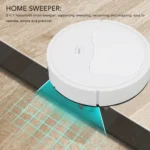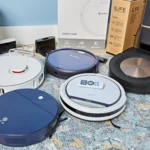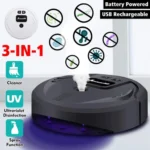Keeping your home clean and tidy can be a challenging task, especially if you have a busy schedule. Thankfully, technology has introduced an innovative solution to this problem with smart vacuum cleaners that come equipped with smart home integration. With these futuristic cleaning devices, you can easily clean your home with the click of a button on your smartphone, saving you time and effort. But with so many options on the market, it can be perplexing to know where to start. In this article, we’ll provide a comprehensive guide on the factors to consider when picking a smart vacuum cleaner with smart home integration to help you make an informed decision.
Factors to Consider
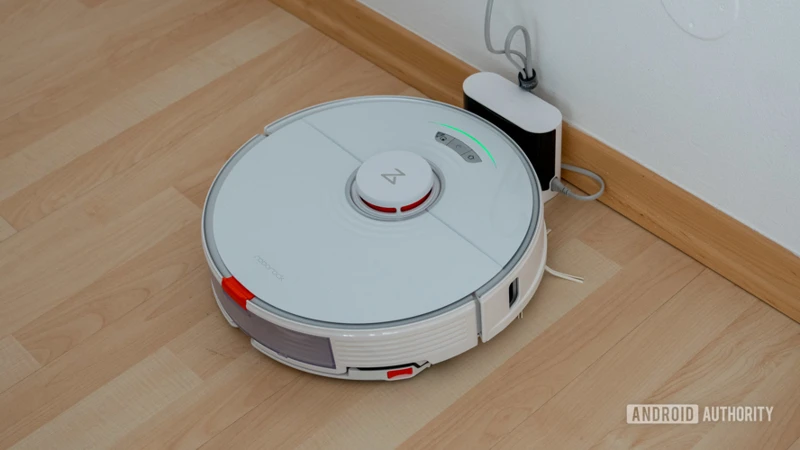
If you’re in the market for a smart vacuum cleaner, there are a multitude of factors to consider before making your purchase. With so many options available on the market, it can be overwhelming to determine which features are necessary for your household. However, by considering factors such as compatibility with smart home systems, navigation and mapping abilities, battery life and recharging time, dustbin capacity and filtration system, noise level, and additional features, you can make an informed decision when selecting a smart vacuum cleaner. In this article, we’ll break down each of these factors in detail to help you choose the best smart vacuum cleaner with smart home integration for your cleaning needs.
1. Compatibility with Smart Home Systems
When considering a smart vacuum cleaner with smart home integration, compatibility with your existing smart home systems is an important factor to take into account. Can the vacuum be connected to your smart phone, smart speaker, or other devices in your home? Make sure to check whether the vacuum cleaner is compatible with popular smart home systems such as Amazon Alexa, Google Assistant, and Apple HomeKit.
To help you compare and choose the smart vacuum cleaner that is compatible with your smart home systems, we’ve prepared an html table listing some of the most popular systems and whether they are compatible with the top smart vacuums on the market.
| Smart Home System | Roomba i7+ | Ecovacs Deebot Ozmo T8 AIVI | Shark IQ Robot Self-Empty XL |
|---|---|---|---|
| Amazon Alexa | ✅ | ✅ | ✅ |
| Google Assistant | ✅ | ✅ | ✅ |
| Apple HomeKit | ❌ | ❌ | ❌ |
| IFTTT | ✅ | ✅ | ✅ |
| Samsung SmartThings | ✅ | ✅ | ✅ |
It’s worth noting that some smart vacuums only support certain features on compatible smart home systems, such as starting and stopping the vacuum or scheduling cleaning tasks. Make sure to read the manufacturer’s specifications carefully or consult with a sales representative to ensure that the vacuum cleaner will work seamlessly with your existing smart home setup.
2. Navigation and Mapping Abilities
When it comes to picking a smart vacuum cleaner with smart home integration, one important factor to consider is the navigation and mapping abilities of the device. The ability of the smart vacuum cleaner to navigate around your home and map out the cleaning areas can have a significant impact on the efficiency and effectiveness of the cleaning process.
Why Navigation and Mapping Matter
Smart vacuum cleaners with advanced navigation and mapping abilities can plan and execute their cleaning tasks with remarkable efficiency. They can map out your home and create a virtual cleaning plan, using intelligent sensors and algorithms to optimize cleaning patterns and avoid obstacles. This can result in faster, more thorough cleaning of your home without unnecessary overlap or missed spots.
Key Features to Look for in Navigation and Mapping
When selecting a smart vacuum cleaner, look for the following key features in navigation and mapping:
| Features | Description |
|---|---|
| Mapping Technology | Look for a smart vacuum cleaner with advanced mapping technology such as LIDAR (Light Detection and Ranging) or SLAM (Simultaneous Localization and Mapping) to create an accurate map of your home. |
| Sensor Technology | Smart sensors can help the vacuum cleaner to avoid collisions with obstacles, such as furniture or other household items. |
| Room Recognition Feature | A smart vacuum cleaner that can recognize and differentiate between rooms can perform cleaning in a more targeted and efficient way, allowing you to customize cleaning patterns based on your preferences. |
| Floor Type Recognition | Some smart vacuum cleaners are designed to detect different floor types, such as hardwood, carpet, or tile. This feature can ensure that the device adjusts its cleaning ability to the floor type for optimal cleaning results and battery life. |
Benefits of Advanced Navigation and Mapping
Smart vacuum cleaners with advanced navigation and mapping abilities can bring several benefits to smart home owners. These include:
- More efficient and targeted cleaning, leading to cleaner floors with less time and effort required.
- Customizable cleaning patterns that can be tailored to suit individual preferences and schedules.
- Reduced risk of damage to household items and furniture due to collision avoidance technology.
- Ability to clean larger areas more effectively, as the device can cover a greater area with less chance of missing any spots.
Smart vacuum cleaners with advanced navigation and mapping technology can deliver a more efficient and effective cleaning performance in a smart home. By carefully considering the key features outlined in this section, you can choose a smart vacuum cleaner that is best suited to your home’s cleaning needs.
If you want tips on selecting the best smart vacuum cleaner for pet owners, you can check out our article on Selecting a Smart Vacuum Cleaner for Pet Owners.
3. Battery Life and Recharging Time
When it comes to battery life and recharging time, these two factors are essential in determining the convenience of a smart vacuum cleaner. To avoid frustration, you should consider the type of battery used and the estimated time before a recharge is necessary.
One important factor is the type of battery used in the smart vacuum cleaner. Lithium-ion batteries are highly recommended due to their ability to store more power and charge faster than older NiCad batteries. Some smart vacuum cleaners come with replaceable batteries, while others have a built-in battery that recharges via a charging dock. If you opt for a vacuum with a built-in battery, then you should check the estimated battery life, and how long it takes to fully recharge once the battery runs out of power.
In addition to battery life, the recharging time is also crucial. A vacuum cleaner that takes too long to recharge can cause delays in cleaning schedules and inconvenience. Some smart vacuum cleaners come with a quick charge function that allows them to recharge within a short time frame, such as 2 hours, while others may take up to 4 hours or more to fully recharge.
To ensure optimum performance, it is recommended to follow the manufacturer’s instructions on how to charge and maintain the battery. You should avoid overcharging or letting the vacuum run until the battery is completely drained, which can affect the battery’s lifespan and performance.
Battery life and recharging time are essential factors to consider when picking a smart vacuum cleaner. For more information on other factors to consider when choosing a smart vacuum cleaner, check out our smart vacuum cleaner guide.
4. Dustbin Capacity and Filtration System
When looking for a smart vacuum cleaner with smart home integration, it is important to consider the dustbin capacity and filtration system. These factors can greatly affect the efficiency and effectiveness of the vacuum cleaner.
Dustbin Capacity: The dustbin capacity determines how much dust and debris the vacuum cleaner can hold before it needs to be emptied. A larger dustbin capacity is generally more convenient because it means less frequent emptying. However, it is important to note that a larger dustbin may make the vacuum cleaner heavier and bulkier.
Filtration System: The filtration system is responsible for removing dust, allergens, and other particles from the air as the vacuum cleans. There are various types of filters available, but the most popular and effective type is the HEPA filter. The HEPA filter is capable of removing particles as small as 0.3 microns, making it the ideal choice for people with allergies or asthma.
To help you choose the right smart vacuum cleaner based on these factors, we have created a table comparing some of the top models on the market:
| Vacuum Cleaner Model | Dustbin Capacity | Filtration System |
|---|---|---|
| Xiaomi Mi Robot Vacuum | 420 ml | HEPA Filter |
| iRobot Roomba i7+ | 500 ml | HEPA Filter |
| Shark IQ Robot Vacuum | 550 ml | HEPA Filter |
As you can see, all of the models listed feature a HEPA filter, which is a great bonus for allergy or asthma sufferers. The Shark IQ Robot Vacuum, in particular, has the largest dustbin capacity of the three models, making it a great choice for those who want to minimize the frequency of emptying.
Internal link: To learn more about the benefits of HEPA filters for smart vacuums, check out this article.
5. Noise Level
When choosing a smart vacuum cleaner with smart home integration, it’s important to consider the noise level. No one wants a device that disrupts their peace and tranquility by making excessive noise. Here are some points to consider when it comes to noise:
- Noise level in decibels: Look for the vacuum cleaner with the lowest decibel rating possible. 60 decibels or less is considered quiet. If the noise level is not mentioned in the product description, look up reviews to see what others are saying about it.
- Types of noise: A vacuum cleaner can create two types of noise – lower frequency from the motor, and higher frequency from the suction power. A vacuum cleaner with a lower frequency motor will generally produce less noise. However, the suction power also contributes to the noise level, so make sure to also read up on suction power and noises.
- Schedule cleaning feature: Many smart vacuum cleaners come with a scheduling feature that allows you to choose when the machine can do its job. This feature is useful if you want to run the vacuum cleaner while you’re not at home. However, if you have pets or children at home, make sure to set the device to clean at times when it won’t interfere with their daily activities as it can still be a distraction.
Noise is an important factor to consider when selecting a smart vacuum cleaner for smart home integration. You’ll want to ensure that it runs quietly to avoid irritating disturbances while also fulfilling its sole purpose of cleaning the house. A device with a lower frequency motor, and lower suction power can help keep the noise level down.
6. Additional Features
When it comes to additional features, there are many options to choose from when picking a smart vacuum cleaner with smart home integration. Here are some worth considering:
- Remote Control: Some smart vacuum cleaners come with a remote control, enabling you to program, start, stop, or dock the robot cleaner without requiring the use of a smartphone app.
- Smartphone App: Almost all the smart vacuum cleaners available in the market provide users with a smartphone app. Through these apps, you can set up cleaning schedules, monitor cleaning progress, and select different cleaning modes using your smartphone.
- Voice Assistant Compatibility: Some smart vacuum cleaners are compatible with voice assistants, such as Amazon Alexa and Google Assistant. This feature allows you to control your robot cleaner through voice commands.
- Smart Navigation: Some smart vacuums feature advanced navigation systems that use lasers, cameras, or smart sensors to map the layout of your home, avoid obstacles, and find their way back to the docking station.
- Automated Charging: Many smart robot vacuums are equipped with intelligent charging systems, designed to automatically dock and recharge the device when the battery is low. This feature is particularly handy for busy households.
- Customized Cleaning: Some smart robot vacuums come with customizable cleaning modes designed to meet specific needs. This feature allows you to choose different cleaning modes, such as spot cleaning, edge cleaning, or whole-home cleaning, depending on your needs and preferences.
- Dustbin Capacity and Filtration System: As mentioned above, dustbin capacity and filtration system are important factors to consider when choosing a smart vacuum cleaner. Some smart vacuums are equipped with advanced filtration systems that can capture and trap tiny particles, such as allergens and dust mites.
With so many additional features available, it’s essential to think about your lifestyle and cleaning needs to determine which ones are important for you. Whether you prioritize the convenience of voice assistant compatibility or the advanced mapping capabilities of a robot vacuum cleaner, picking the right additional features will ensure you get the most out of your smart home cleaning system.
Benefits of Smart Vacuum Cleaners with Smart Home Integration
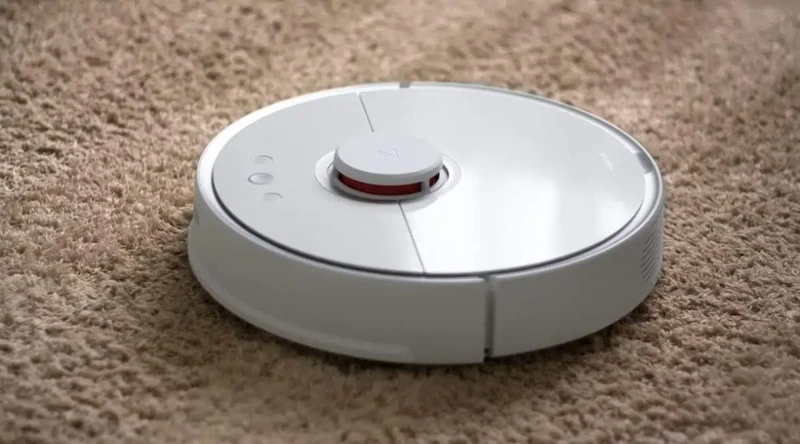
If you’re looking for a more efficient and convenient cleaning experience, investing in a smart vacuum cleaner with smart home integration can be a great option. These cutting-edge cleaning tools have a range of benefits that make them a popular choice among consumers. Below are some of the major advantages of using a smart vacuum cleaner with smart home integration:
Ease of use: Smart vacuum cleaners are designed with the latest technology, making them easy to operate from your smartphone, voice assistants, or smart home systems. With just a few clicks on your smart device, you can schedule cleaning times, select cleaning modes or receive alerts. This eliminates the need to operate the cleaner manually, thereby saving you time and energy.
Improved cleaning efficiency: Smart vacuum cleaners usually have advanced sensors and mapping technology that help them navigate your home and clean more efficiently. Some models have laser-guided mapping technology that helps them map details of your home while identifying objects or obstacles on their path. This allows them to avoid furniture and operate more efficiently.
Longer battery life: Smart vacuum cleaners offer longer battery life compared to traditional models. They come with high-capacity batteries that keep them running for an extended period of time. Some models have a self-charging feature that puts the robot vacuum back on its charging dock when the battery is low. You can read more about smart vacuum battery factors in our related article.
Better dust and debris management: Smart vacuum cleaners come with advanced dustbin capacity and filtration systems that collect and trap harmful allergens and dust particles efficiently. You might consider reading our article on dustbin capacity for smart vacuum cleaners buyers to learn more about this factor. These dustbins have a large capacity and are easy to remove and clean. This ensures that your home remains free from dirt and allergens, providing you with a cleaner, fresher environment for yourself and your loved ones.
Reduced noise level: Smart vacuum cleaners are designed to operate quietly, creating less distraction and “white noise” in your home. With a low noise level, you can let your smart vacuum cleaner do its cleaning work without any disturbances. You can learn more about smart vacuum noise level in our related article.
Smart sensors for better cleaning: Many smart vacuum cleaners come equipped with sensors that help them identify areas that need more cleaning. In other words, the sensors detect dirt and debris on the floor and focus on these areas more effectively. This leads to a better overall cleaning experience. You can read more about smart sensors and how they affect smart vacuum cleaning in our related article.
Owning a smart vacuum cleaner with smart home integration can make your cleaning chores much easier and enjoyable. With improved navigation, better dust management, and longer battery life, they are a great investment for those who want to keep their homes clean without the hassle of traditional vacuum cleaners.
Tips for Maintenance and Troubleshooting
Tips for Maintenance and Troubleshooting
Keeping your smart vacuum cleaner in excellent condition is essential to maintain its efficiency and prolong its life span. Here are some tips for maintenance and troubleshooting:
1. Regular Cleaning of the Dustbin and Filter
A smart vacuum cleaner’s dustbin and filter can easily accumulate dirt and debris, affecting the device’s suction ability. It is crucial to clean the dustbin and filter regularly. You should empty the dustbin after each cleaning session and clean the filter at least once a month.
2. Check and Replace the Battery
The battery of a smart vacuum cleaner is one of its essential components. If your device’s battery is no longer holding a charge like it was earlier, it’s probably time to replace it. You can learn more about batteries and their maintenance in our previous article Factors to Consider when Choosing a Smart Vacuum Cleaner’s Battery.
3. Regular Cleaning of Brushes and Rollers
Smart vacuums use brushes and rollers to pick up dirt from floors and carpets. It’s important to routinely clean them, as hair or pet fur can wrap around them and decrease the device’s cleaning power. Regularly checking and cleaning the brushes and rollers can improve your smart vacuum’s efficiency.
4. Calibration of Sensors and Mapping Technology
If your smart vacuum cleaner uses sensors or mapping technology for navigation, it’s essential to calibrate them regularly to maintain their efficiency. You can learn more about mapping technology in smart vacuums in our previous article Mapping Technology for Smart Vacuum Cleaners: How it Works and Why it Matters.
5. Address any Issues ASAP/strong>
If your smart vacuum cleaner starts displaying any issues, such as reduced suction power, loud noises, or failure to connect with your home’s Wi-Fi network, check the user manual for troubleshooting steps. If the problem persists, it’s time to contact the manufacturer’s customer support for further assistance and repairs.
Conclusion
Smart vacuum cleaner technology is constantly improving, making our lives more comfortable and cleaner. With regular maintenance, troubleshooting, and quick problem resolution, your smart vacuum cleaner can serve you always excellently. By following these tips, you can keep your device working at its best for years to come.
Conclusion
In conclusion, picking the right smart vacuum cleaner for your smart home integration requires careful consideration of various factors including compatibility with smart home systems, navigation and mapping abilities, battery life and recharging time, dustbin capacity, noise level, and additional features. These factors are essential in ensuring that the smart vacuum cleaner you purchase meets your needs and preferences.
Moreover, smart vacuum cleaners offer several benefits like convenience, time-saving, and efficient cleaning. With the use of smart sensors, these appliances ensure thorough cleaning of your floors and carpets without much human intervention.
However, to keep enjoying these benefits, you need to maintain your smart vacuum cleaner correctly by following the manufacturer’s guidelines. Troubleshooting any issues that you may encounter with your smart vacuum cleaner ensures that it serves you for as long as possible.
To learn more about dustbin capacity and filtration system, read our article on dustbin capacity for smart vacuum cleaners. For tips on reducing the noise level produced by your smart vacuum cleaner, visit our article on smart vacuum noise level. And if you are interested in smart sensors’ role in smart vacuum cleaning, read our article on smart sensors in smart vacuum cleaning.
In summary, picking the right smart vacuum cleaner offers several benefits to homeowners seeking to create a smart home. Always consider your needs and preferences, the abilities of the smart vacuum cleaner, additional features, and how it integrates with your existing smart home systems. Finally, maintain your smart vacuum cleaner correctly, and troubleshoot any issues that arise.
Frequently Asked Questions
1. Can I control my smart vacuum cleaner with my voice?
Yes, most smart vacuum cleaners are compatible with voice assistants like Amazon Alexa, Google Assistant or Siri, which means you can control them with voice commands.
2. How long does it take to charge a smart vacuum cleaner?
It depends on the model and the battery capacity, but most smart vacuum cleaners take between 2 and 4 hours to fully charge.
3. What is the difference between HEPA and standard filters?
HEPA filters are much more efficient at capturing tiny particles like pollen, dander, and dust mites. Standard filters are less effective and usually need to be replaced more often.
4. Can smart vacuum cleaners clean carpets and hardwood floors?
Yes, most smart vacuum cleaners are designed to clean multiple surfaces, including carpets, hardwood floors, and tiles. Some models even have specialized brushes for deep cleaning carpets.
5. How often do I need to empty the dustbin?
It depends on how frequently you use the vacuum and how dirty your floors are. Most smart vacuum cleaners have sensors that will alert you when the dustbin is full.
6. How does the mapping function work?
The mapping function uses sensors and cameras to create a map of your home. The vacuum cleaner uses this map to navigate around and avoid obstacles.
7. How loud are smart vacuum cleaners?
It depends on the model, but most smart vacuum cleaners are relatively quiet, with noise levels ranging from 50 to 70 decibels.
8. Do I need to be at home to use a smart vacuum cleaner?
No, you can control most smart vacuum cleaners remotely through a smartphone app, even when you’re not at home.
9. Can a smart vacuum cleaner replace traditional vacuuming?
While a smart vacuum cleaner may be able to clean your floors to some degree, it is not a replacement for traditional vacuuming, especially for deep cleaning and hard-to-reach areas.
10. How do I troubleshoot my smart vacuum cleaner?
If you’re experiencing issues with your smart vacuum cleaner, try resetting it or checking if there are any blockages in the brushes or filters. You can also refer to the manufacturer’s troubleshooting guide.




